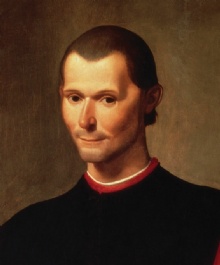Overview
Niccolo Machiavelli’s The Art of War (1521) is a rigorous defense of citizen armies and disciplined infantry as the backbone of a free state. Cast as a dialogue and drawing deeply on Roman precedents, it argues that political liberty and military preparedness are inseparable. The treatise rejects reliance on mercenaries and auxiliaries, urging governments to build a standing militia of their own people, trained with relentless regularity, organized with mathematical clarity, and commanded with sober prudence.
Form and Setting
The book unfolds in seven books as a conversation in the Rucellai Gardens in Florence, with the veteran condottiere Fabrizio Colonna serving as principal voice. Through Fabrizio, Machiavelli channels both classical authority and contemporary experience, steering a circle of young Florentines away from fashionable military fads and back toward Roman discipline. The dramatic form allows concrete problems, how to recruit, equip, arrange marches, camp, fight, and besiege, to be tested against historical examples and present constraints.
Organization and Training
At the core lies a program for a civic militia. Soldiers should be citizens, bound to the laws they defend, selected for physical fitness and moral fiber, and habituated to hardship before ever seeing the enemy. Training is constant: drilling with arms, marching in order, responding to signals, keeping ranks, and maintaining silence. Officers rise by merit and experience, their authority anchored in example and enforcement. Punishments are swift for disorder; rewards are measured and public. The army’s daily life, watches, rations, sanitation, and pay, receives as much attention as battlefield maneuvers, because Machiavelli considers the camp the school of victory.
Tactics, Arms, and Technology
Machiavelli elevates infantry over cavalry, seeing foot soldiers as the most reliable and decisive force. Formations are carefully composed and maneuvered, solid squares and articulated bodies that can advance, receive shock, and reform without dissolving into panic. Pikes and halberds dominate the close fight; light troops screen and harass; cavalry scouts, pursues, and protects flanks rather than decides the day. He acknowledges gunpowder’s rise, artillery reshapes siege warfare and arquebuses unsettle the untrained, but he distrusts overreliance on firearms. Firepower should be subordinated to order, with shot placed to disturb and attrit while disciplined ranks deliver the finishing blow. Artillery, properly sited and shielded, breaks walls and formations, yet its utility never excuses sloth in drill.
Strategy, Logistics, and Sieges
Choice of ground precedes choice of combat. The general should refuse battle on unfavorable terms, force the enemy to march tired and hungry, and keep his own men supplied, rested, and confident. Camps are laid out on Roman lines, with fixed streets, posted guards, and defensible perimeters, so that an army can move and halt like a well-governed city. Sieges demand patience, engineering, and steady morale: cut off supplies, probe weak points, suppress sallies, and avoid fruitless assaults. Fortresses may delay defeat but cannot compensate for a weak army; the surest rampart is a populace trained to arms and loyal to its laws.
Civic Purpose and Legacy
Military power is treated as a civic institution. A republic that arms its citizens cultivates virtue, unity, and obedience to law; a prince who trusts mercenaries invites corruption and servitude. By wedding Roman models to the problems of early modern Italy, Machiavelli presents a blueprint to reforge political freedom through military reform. The treatise influenced debates on militia and strategy across Europe, even as critics deemed its Romanism austere in an age of gunpowder. Its enduring force lies in the claim that strategic success flows less from machines than from institutions: a disciplined infantry, a prudent command, and a political order that makes soldiers stakeholders in victory.
The Art of War
Original Title: Dell'arte della guerra
A dialogue between two characters on the subject of military strategy and tactics. The work focuses on the organization, training, and equipment of the ideal army in sixteenth-century Italy.
Author: Niccolo Machiavelli
 Niccolo Machiavelli's biography, quotes, and impact on philosophy and politics in Renaissance Florence.
Niccolo Machiavelli's biography, quotes, and impact on philosophy and politics in Renaissance Florence.
More about Niccolo Machiavelli
 Niccolo Machiavelli's biography, quotes, and impact on philosophy and politics in Renaissance Florence.
Niccolo Machiavelli's biography, quotes, and impact on philosophy and politics in Renaissance Florence.